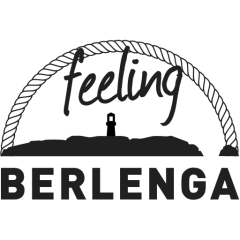The unique specificities of the archipelago, from geology to climate, provide conditions for numerous types of habitats with different characteristics:
- Sea caves (submerged or partially submerged) – Valuable refuges for various species, and of great biodiversity value.
- Reefs – Underwater rocky formations where large numbers of algae can be found at shallow depths: an ideal refuge and source of food for many fish species. At greater depths, we can find very different communities, including less common species of sponges, gorgonians and cold water corals.
These two habitats are highly sought after by divers. Take advantage of Feeling Berlenga® ‘s diving experiences and witness this unique and rare beauty first hand.
- Dry caves – The constant shade and water provides favourable conditions for plant growth.
- Latosols or Deep Soils – Due to its capacity for retaining moisture, we can find larger plants in this type of habitat.
- Lithosols or Skeletal Soils – Unlike deep soils, these soils are shallow or compact so the plants that live here are small.
- Rocky Outcrops – In this type of habitat, we can find small and dispersed vegetation nestled in granite cracks.
- Seacliffs – Several plants can be found on these slopes exposed to wind and sea spray, and although these are terrestrial plants, they are also halophytes, which are adapted to life by the sea and have very high tolerance levels for salinity.
- Gravel beds – Habitats formed by the fragmentation of granite over the years, and quite visible and consolidated in the archipelago.
- Humid depressions – Depressions caused by the degradation of granite due to its exposure to the action of wind and rain. These habitats appear mainly in the rainy months where it is possible to observe the growth of ephemeral plants.
